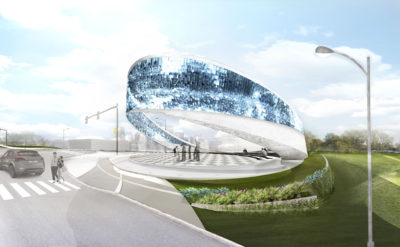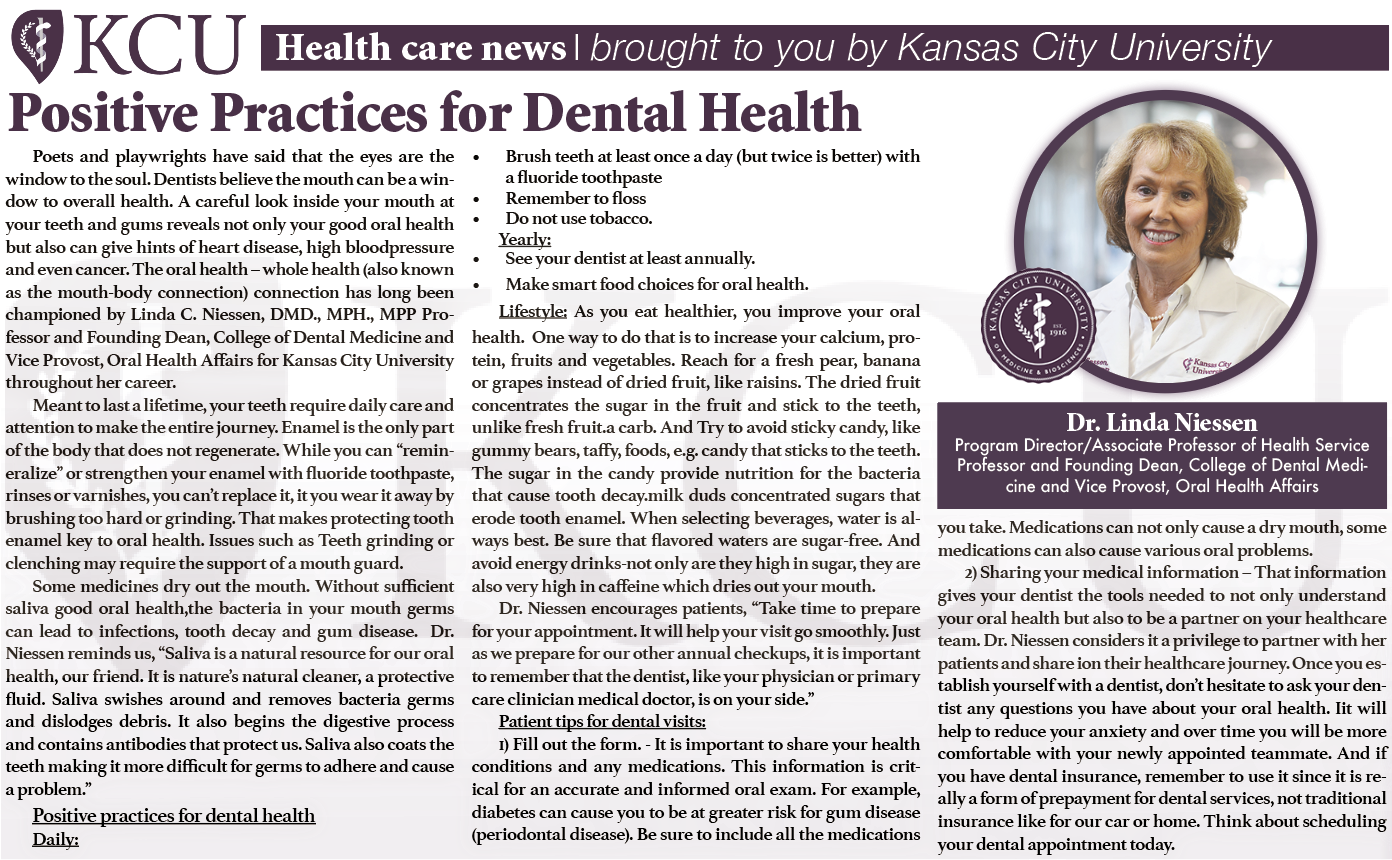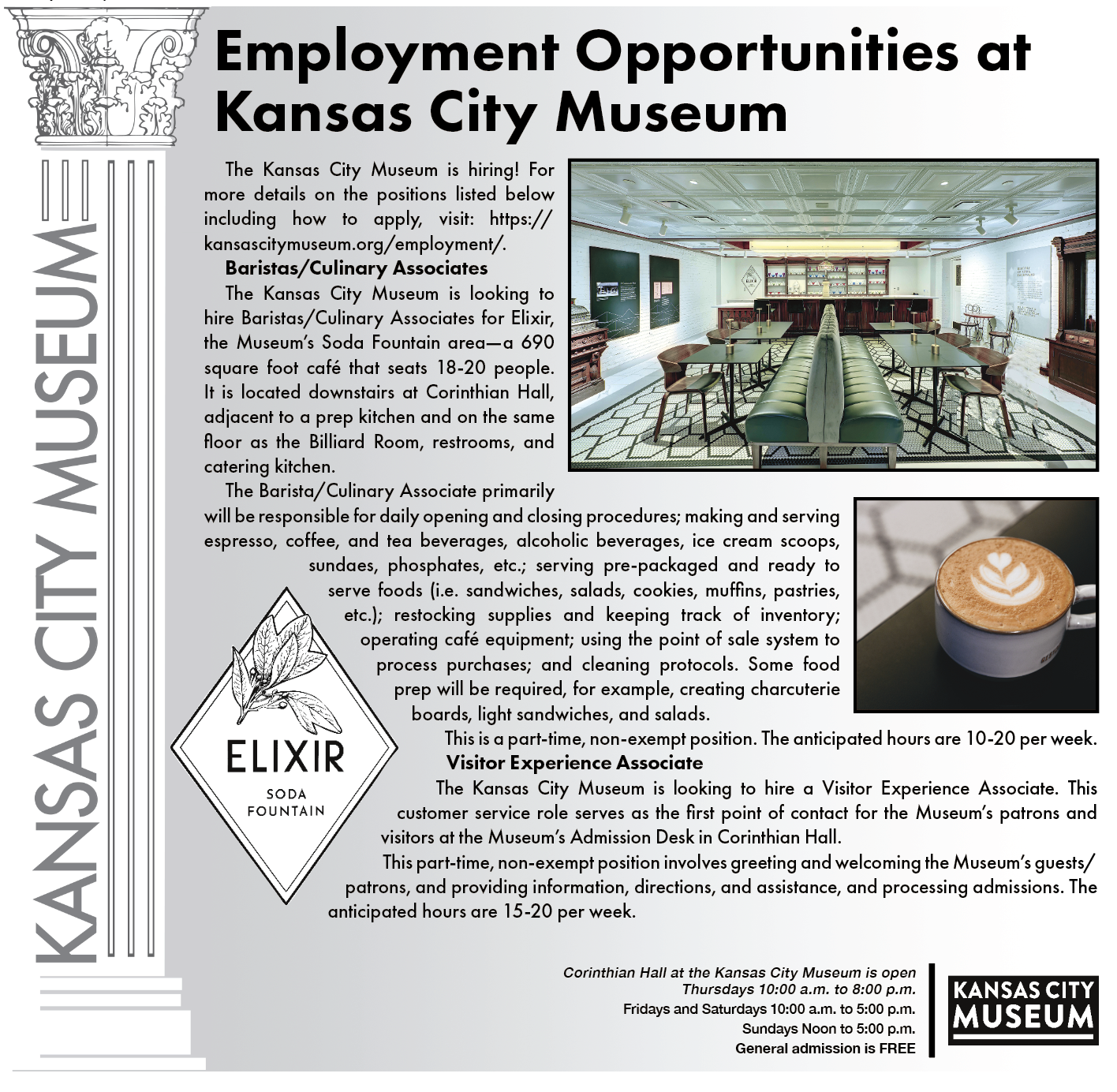Paul Thompson
Northeast News
Since 2015, the City of Kansas City, Missouri has been working towards a solution to ease congestion at the high-traffic intersection of Independence Avenue and The Paseo.
The impetus for the intersection improvements was a $30 million Choice Neighborhoods grant issued by the U.S. Department of Housing and Urban Development (HUD). Those funds have anchored a renaissance of the Paseo Gateway corridor, with construction of improved public housing in the neighborhood highlighting the efforts.
Now, the Paseo Gateway team is leveraging $5 million in federal Surface Transportation Program (STP) dollars and $3.5 million in General Obligation bonds funds (approved by voters in April of 2017) for the next phase of the project – a redesigned intersection at Independence Ave. and The Paseo. In addition to improved traffic flow, the project will include a Paseo Gateway monument on the northwest corner of the intersection.
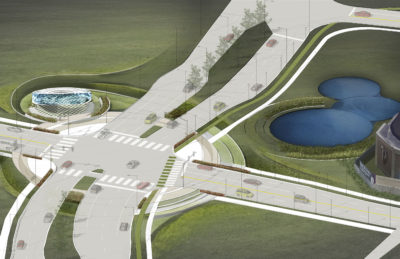
The plans were presented to the community on Tuesday, April 24 at Kansas City University’s Butterworth Alumni Center, in a presentation that left some attendees concerned about how the fix for vehicle traffic might impact pedestrian access at the bustling intersection.
Parks and Recreation project manager James Wang and Jay Burress, Paseo Gateway project manager for consultant Shafer, Kline & Warren, Inc., joined architects from International Architects Atelier (IAA) to unveil the vision for the intersection. To Wang, the April 24 meeting was an opportunity to show the public how the team had incorporated feedback from an October 2017 public input session.
“Today, we’re just here to turn in our homework,” Wang said.
In addition to new stop lights on the north side of the intersection, where today only a stop sign separates west-bound traffic on Missouri Avenue from the north-bound exit ramp off of I-35, the preferred plan for the intersection would feature new left-turn lanes, water retention ponds at the northeast corner of the intersection, and a brand-new art installation at the northwest corner .
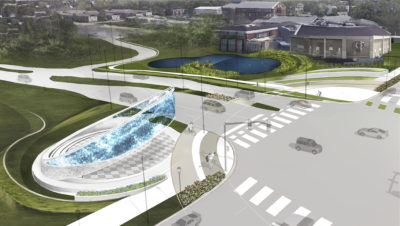
Burress touted the new turn lanes at the intersection, suggesting that the April 24 meeting actually began a few minutes late because he had waited for three rotations at the high-volume stop light.
“Currently, there are no left turns at that intersection during rush hour,” Burress said. “This new project is going to create dedicated left turn lanes.”
Project architect Majid Amirahmadi of IAA was tasked with presenting the much-anticipated artistic component of the design. The new monument at the intersection had been a key focus of the October 2017 public meeting – during which designers solicited feedback about creating a bold and unique installation.
The end result was a large, angled ring design, which is expected to be large enough to serve as a community gathering point. The monument would have an interactive element, in the form of small squares around the band that would interplay with the wind. Amirahmadi indicated on April 24 that the base of the monument would likely be made out of stone, while the interactive element is expected to be multi-colored, but not reflective.
“We want to make it a place for gathering,” said Amirahmadi, “There are things that can happen there.”
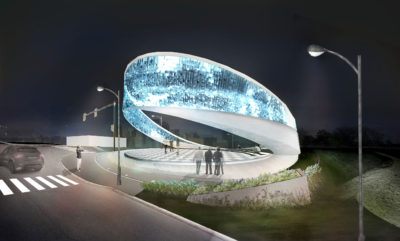
Some at the meeting were concerned, however, that the installation would be stuck on an island that would be difficult for the public – primarily pedestrians – to reach. Most of the surrounding neighborhoods are located to the northeast of the intersection, and there isn’t extensive development directly west of the proposed site.
The project team suggested that intersection improvements – and the monument that comes with it – could help attract economic development to the area.
“Your concern is absolutely valid; we’re hoping that this is a little bit of a catalyst,” said Burress. “Everyone is working hard to make the rest of this happen.”
Burress added that the vacated site of the former Chouteau Courts housing complex could serve as a blank palate for exciting new development in the near future. In the interim, though, some attendees worried that the intersection improvements provide a solution for vehicle congestion at the expense of pedestrian traffic. Concerns included the expanded width of the street under the proposed plan.
Wang responded that the traffic lights would be re-timed to adjust for the extended time it will take to cross the busy intersection.
“It’s a little longer, but that can be managed by the proper timing of the signals,” Wang said.
Another attendee asked about the rationale behind the decision to make the turns at the intersection wider, relaying a concern that the wider turn will encourage drivers to come into the intersection at a higher rate of speed.
Wang responded that the wider turns are designed to keep cars from over-cutting on turns, potentially clipping the curbs where pedestrians might be standing.
Another question revolved around the funding for the newly-added retention ponds, though Wang eased concerns by saying that the funds were provided not out of the project budget, but from the KCMO Public Works Department’s Overflow Control Program. At this point, a final project cost has not yet been totaled.
Following the meeting, the Northeast News spoke with Wang to discuss the feedback from the community. Wang conceded that the Gateway design seemed to go over better than the intersection improvements.
“We’ll have a few vocal folks that are going to have concerns about pedestrians and bicycle lanes,” Wang said. “It’s a good process, and that’s why we want to have those meetings and get that feedback. It’s not atypical at those meetings to have folks with different opinions; it’s part of the public opinion process.”
From here, the project team is expected to reconvene to consider the feedback provided during the April 24 meeting. The goal remains to begin construction on the new intersection sometime in 2019.
“We’re going to go over those comments that we received, and we’ll see if the comments justify a redesign,” Wang said. “We hope to start construction in 2019; it will be a two-year process.”


